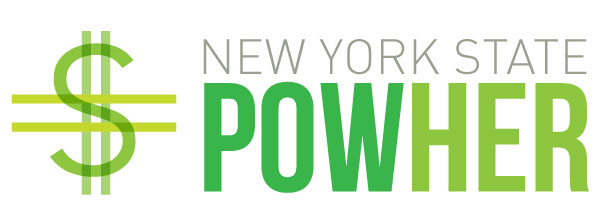Divided We Fall
As we watched the protesters make their way up Columbus Avenue, past our building on 95th Street, we realized that they had walked all the way from 14th Street and Union Square and were going to join those already gathered at 125th Street in Harlem. My heart both leaped and sank. My heart sank because the decision by the Grand Jury of Ferguson, MO not to indict Police Officer Darren Wilson of any wrong-doing in the matter of his shooting Michael Brown to death on August 9, 2014 had been announced earlier that evening. [For a timeline of events, see the NY Times: http://www.nytimes.com/interactive/2014/11/09/us/10ferguson-michael-brown-shooting-grand-jury-darren-wilson.html?hp&action=click&pgtype=Homepage&module=b-lede-package-region®ion=top-news&WT.nav=top-news] You will be also able to find a great deal of legal analysis of this matter through a quick internet search.
So, why did my heart leap? My heart leapt because we have the freedom to protest an act that many people have determined to be an example of injustice based upon the circumstances of Michael Brown’s race. Petitions were distributed within minutes of the announcement and many individuals and organizations have expressed their commitment to continue to work toward improving our systems of justice and law enforcement. This nation has been founded on the principal that we have certain inalienable rights, and since the passage of the 13th, 14th, 15th, and 19th Constitutional Amendments, http://www.archives.gov/exhibits/charters/constitution_amendments_11-27.html those rights have belonged to all U.S. Citizens. We have a legacy, in fact a responsibility to defend our rights and the rights of others, which is why we have a jury system, a jury of our peers, who hear arguments from both the prosecutor and defense attorney, is supposed protect our rights under the law.
Barriers
When the decision was announced at approximately 9:30 EST on Monday, November 24, the internet lit up with millions of comments. People wrote of despair, heartbreak, rage, disappointment, disgust, and sadness. Others wrote hateful things, racists things, dividing things about those who grieved and mourned. Then, images began appearing of violence in Ferguson, MO. Images also appeared of peaceful protests in Ferguson and across the country; however, the predominant images posted by the media were of looting, burning, and violence. Let’s be very clear: violence solves nothing. Looting, burning of shops and destruction of property is worse than an exercise in futility – these actions result in raising barriers to inclusion and reinforcing the stereotypes held by many who do not understand the reasons for riots or even protests.
Individuals who believe that they are not represented by the justice system or their government may stop voting and if their frustration over their inability to effect change or achieve social justice reaches an extreme level, they will react not in a rational, ‘cool-headed’ way, but as a mob, pushed to mindless rage. There is not a specific cause and effect to riots. In other words, rioters or looters do not necessarily attack shops owned by people who treated them rudely or those with contents of the greatest value, there is just a need to vent. I experienced several riots in the 1960s first-hand and will never forget the enormity of the despair that consumed my community. The events of this past week have brought back those memories and feelings.
Haters ‘Gonna Hate
Since last Monday evening the twitter-sphere has been deluged by a steady stream of hate speech. I will not quote any of the comments here. I will state that although I have spent my life fighting hatred and have heard and read more racist comments than I care to count throughout my career and life, the sheer quantity and vitriolic intensity of many of the comments posted during the past eight days has shaken me. We do NOT live in a post-racial society. Racism is as prevalent today as it was in 1865. Yet, most people are fairly polite when they meet other people, in person, who are different from themselves. But if the numbers of comments on the internet in response to the events in Ferguson are any indication, we need to pay close attention to the reality that many people who are not discussing ‘the Ferguson matter’ at work, have very strong thoughts and feelings about this matter, which they are expressing elsewhere.
Some insight is offered by “The Whiteness Project,” being produced by PBS Video. This is “an interactive investigation into how Americans who identify as “white” experience their ethnicity.” http://video.pbs.org/video/2365320408/ The comments made by several of the participants indicate a profound lack of connection with or empathy for African Americans or their experiences. They also exemplify our nation’s deep polarity along racial lines which appears to be increasing rather than diminishing. [This project certainly warrants an entire blog post, but as it is relevant to this topic it is included here.]
Can We Talk?
We need to address the responses to the reactions to the announcement in Ferguson, MO by creating a forum for productive dialogue. This dialogue needs to be based on the desire to experience empathy. It is only through empathy that we can begin to understand behavior or feelings that seem foreign or unacceptable to us.
It is with this in mind that I am making the following request: How do you think you would feel if you were an 18 year old African American man living in the United States of America right now, observing all of the news, media and internet commentary regarding the events in Ferguson, MO?
Please, think this through very carefully before responding. As you try to walk in this person’s shoes, remember that the exercise is not based upon fashion or wardrobe choices, vocation, educational status, profession, religion, political affiliation, class, region, whether one was raised in a home with two loving, supporting parents or by a single parent, this has only to do with the circumstances of one’s birth – to be born as an African American male in the United States of America in 1996. Can you imagine how you might feel during this past week reading all of the headlines on “the Ferguson matter”? [If you are, or ever have been, an 18 year old African American man, please share your comments as well!]
Please send me your comments and – for the love of our country – let’s not be polite! Let’s start to talk about race honestly, openly, respectfully, and with the intent to work on healing a nation that has been poisoned by racism since long before it was a nation.
If you have not asked yourself questions like this before, isn’t this the time to begin?
Onward!
~ Wendy
wendy@inclusionstrategy.com
















